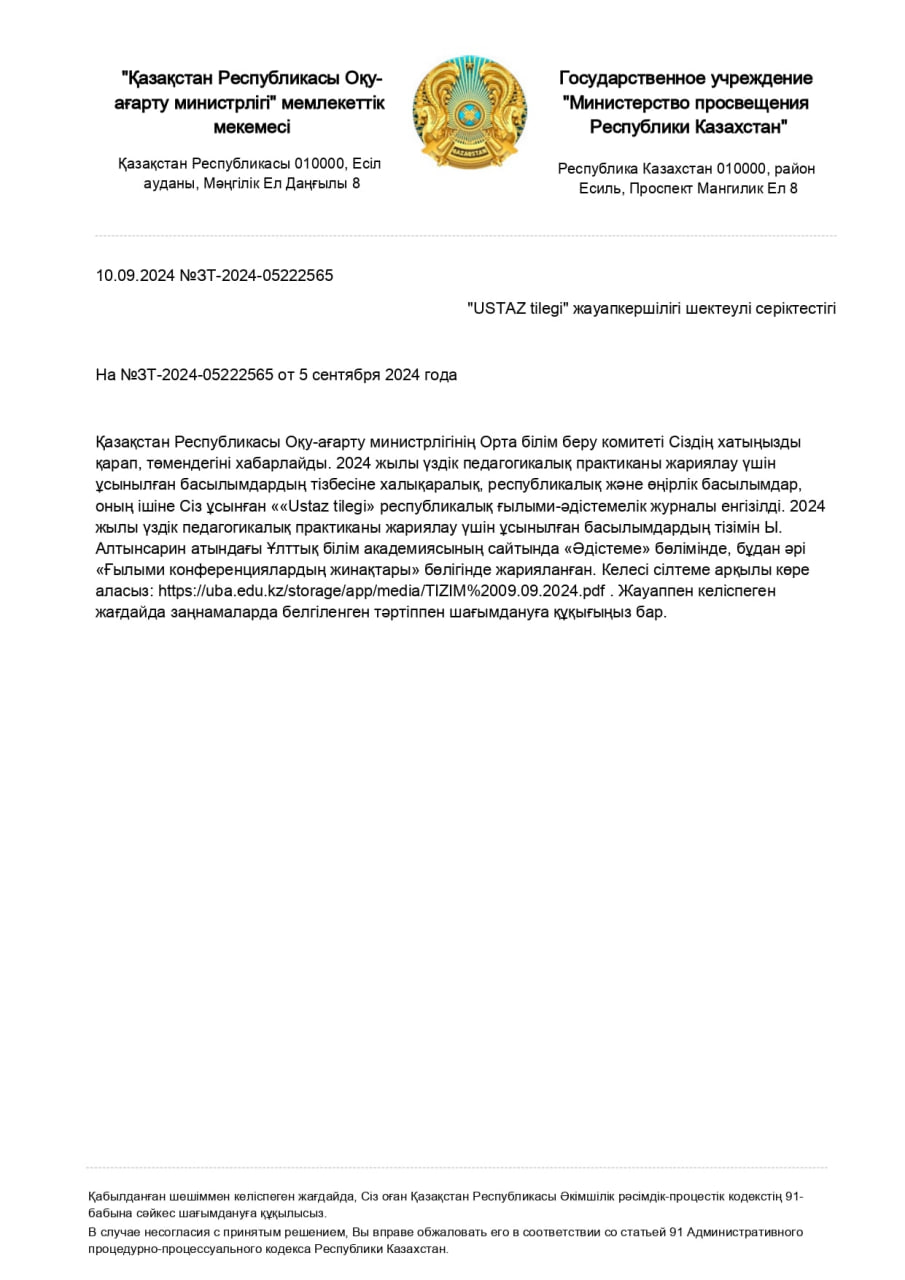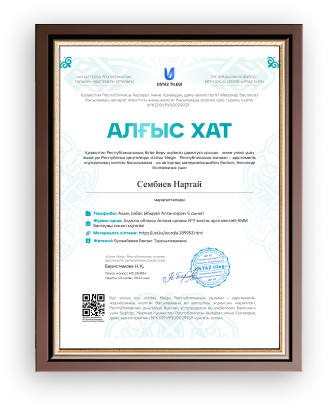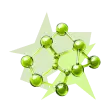
Education in modern society
At any time and epoch, the main task of an educational institution, first of all, a school, is to fully reveal the individual abilities and capabilities of each of the students, to prepare them for independent life in a difficult competitive world. Modernity is no exception.In my opinion, the main scourge of the education system in our country is its universality, that is, the desire to equalize all students by offering them identical programs. But it is not necessary for young people with a philological mindset to study exact sciences in the same volume as born "physicists". Therefore, there should be an early profile division into specialized classes.Another big problem today is the excessive workload of both students and students. Students must master numerous compulsory subjects, while they have almost no time left for self-education. But it is self-education, as it seems to me, that is the basis for the formation of a full-fledged personality. Moreover, we live in a time when information quickly becomes outdated and the knowledge obtained some five to ten years ago may be unusable.Taking into account modern realities, including great competition in the labor market, education in modern society should contribute to the upbringing of a person who would be competitive, able to apply the theoretical knowledge gained in practice.Also, we should not miss such important, in my opinion, moments as the education of patriotism and morality, the development of a culture of thinking, the ability to think creatively, to be able to formulate their beliefs and defend them.The modern education system is undoubtedly expecting big changes. When implementing changes, the main thing is not to overdo it and be able to maintain an optimal balance between the traditional system and innovations.
Education has a decisive impact on the cultural genesis of modern man. Its scale is significant in Kazakhstan. On average, five people employed in the national economy account for one of the students. The development of the republic after independence begins to implement the concept of continuing education. This means that essentially the entire population will be covered by various forms of education.At the same time, civilization is experiencing a crisis in the education system. The disproportion between the potentials of human culture, the achievements of society and the culture of the masses has developed and is deepening more and more. Training covers large periods of a person's life, absorbing his productive, creative years. A young person applying for a mid-level profession must study for at least thirteen years, and for a highly qualified profession, the training period reaches up to twenty years.Currently, the prestige of education has increased, but in some moments there are still negative phenomena: the motive of "acquiring a diploma", ugly forms of protectionism, infringement of human rights and dignity.
Plan
I.Introduction...................................................................................................... 3
1.1 general understanding of amino acids ………………………………….. 4
2.1 amino acids included in the protein composition……………………….. 5
2.2 nonpolar neutral amino acids……………………………………………..6
2.3 Polar neutral amino acids…………………………………………………7
2.4 chemical properties of amino acids …………………………………….. 8
Conclusion…………………………………………………………………… 9
Used literature……………………………………………………………… 10
Introduction
Amino acids are water-soluble, colorless crystalline substances.
Some of them will have a sweet taste. The balku temperature of amino acids will be higher. In the amino acid molecule there are two functionalist groups that are inherently anti-Karama: the carboxyl group and the amino group that has the basic property. According to this, the amino acids form internal salts called betains:Since betains have both positive and negative charges, they are called biopolar ions.The formation of internal salts of amino acids can be seen in the neutral reaction of their solutions, in the low dissolution of organic solvents, etc. The biopole ion is present in the acidic medium as a cation, and in the alkaline medium as an anion.
Amino acids
Acid derivatives containing one or more amino subgroups of a molecule are called amino acids.Your amino acid molecule can contain one or more carboxyl subgroups. In accordance with it, there will be one -, two-and multi-base amino acids.From the residues of amino acids, protein substances necessary for life are formed, so their importance is very great.This chapter describes a single-base, amino acid whose molecule contains a single amino subgroup. is considered. Their general formula:
Isomerism and nomenclature
The isomerization of amino acids corresponds to the isomerization of oxide acids, that is, they have the condition isomerization of the amino subgroup and chain isomerization.According to the international nomenclature, amino acids are called by adding the word Amine to the name of the corresponding carbonic acid, indicating the location of the amine subgroup in numbers.According to rational nomenclature, the place of the amine subgroupwith Greek characters (), indicating that the carboxylic acidin the form of a derivative. Many amino acids are historicalit is also called by nomenclature
In the 20s of this century, the Swedish scientist T. Swedberg used the ultracentrifugation method for the first time to determine the molecular mass (weight) and purity of proteins. The study of proteins by electrophoresis, proposed by the second Swedish scientist A. Tizelius, was a breakthrough in this area (1933).It was he who determined the enzymatic nature of I. P. Pavlov, especially proteins. Sumner (1926), J. After the valuable work of Northrop (1930), the study of proteins was undertaken on a large scale. New (1953), discovered by F. Senger in the biochemistry of proteins, was an epoch-making phenomenon. He found that amino acids in the polypeptide chain always bind in a certain order.
Protein substances are produced in the plant. For this, nitrogen compounds in the soil are used. Legumes, on the other hand, can use the nitrogen contained in the air to form proteins. Wildlife and man synthesize protein from amino acids and other nitrogen-containing organic substances. They get such substances from plants and other animals that they themselves use for food.
The simplest composition of proteins includes the following elements (in%): carbon 50 — 54; oxygen 21.5 — 23.5; hydrogen 6.5 — 7.3; nitrogen 150-17.6; sulfur 0.3 -2.5.Some individual proteins contain iron, phosphorus, zinc, cobalt, manganese, molybdenum, iodine, copper and other elements in small quantities.
The content of nitrogen in proteins is constant, and it contains on average 16 percent of all elements in terms of dry mass.Amino acids included in the protein compositionIt has been found that when hydrolysis is done with the help of an acid or enzyme, proteins are broken down into amino acids and broken down. Amino acids are monomeric individual substances that form molecules of different proteins.
More than eighty amino acids are known in nature. Only twenty of them are included in the protein composition.Amino acids - These are organic acids. Their molecule has both a carboxylic ( — soon) group and an amine (-NH2) group. In the amino acid molecule, the amino group,, is present both in the case and in the other case. Of natural proteins, only, - an amino acid is found. It binds to the first carbon atom-group after the carboxylic group in the acid. -the general formula of the amino acid can be expressed as follows:
R — CH – COOH
where: R is a radical, indicating the groups on the side.
The specificity of the physical, chemical and biological properties of amino acids depends on the structure of the side groups.
Depending on the chemical composition and the structure of the groups on the sides, amino acids are classified as polar (hydrophilic) and nonpolar (hydrophobic), or they are divided into neutral, acidic and basic amino acids. Depending on the nutritional value, a distinction is made between replaceable and irreplaceable (not formed in the human and animal body) amino acids. I
Now let's divide the amino acids included in the protein into classes, report the feed price and consider their structural formula. Their short name is given in parentheses. These amino acids are used by the body for protein synthesis. The side groups in their formulas are separated by squares with dashed dashes.
Nonpolar neutral amino acids.These acids contain organic radicals, such radicals can neither receive nor transmit protons nor react with water (they are hydrophobes, they can see water). Such acids include:
Glycine (abbreviated name gli), a replaceable amino acid;
Alanine (Ala for short), a replaceable amino acid;
Valine (Val for short), an irreplaceable amino acid;
Leucine (Lei for short), an irreplaceable amino acid;
Isoleucine (Ile for short), an irreplaceable amino acid;
Methionine (met for short), an irreplaceable amino acid, contains sulfur and an unstable methyl group.
Phenylalanine (Fen for short), an irreplaceable, aromatic amino acid;
Proline (Pro for short), replaceable, is an amino acid.
Polar neutral amino acids
This group of acids has such polar bonds as C — O, O — H, S — H, C-N, which can react with water (hydrophiles are water lovers).
Serine (Ser for short), a replaceable amino acid that contains the hydroxyl-on group;
Threonine( Tre for short), an irreplaceable amino acid that contains the hydroxyl — on group;
Cysteine (CIS for short), a replaceable amino acid, contains the sulfhydryl — SN group. When two molecules of cysteine are oxidized, cystine is formed, cystine contains the disulfide group-S-S -;
Tyrosine (tyre for short), a replaceable amino acid that contains a phenolic radical;
Tryptophan (tri for short), an irreplaceable amino acid that contains an indole ring;
Asparagine (ASN for short), a replaceable amino acid containing the amide group — SONH2;
Glutamine (GLN for short), a replaceable amino acid, contains the amide group —SONH2.
POLAR ACID (HYDROPHILIC) AMINO ACIDS
The side radical of such acids has a carboxyl group, the same group gives these an acidic property:
Aspartic acid (ASP for short), a replaceable amino acid, contains the second carboxyl group — soon.
Glutamic acid (Glu for short), a replaceable amino acid, this also contains the second carboxyl group — soon.
Amino acids are a colorless crystalline substance, soluble in water. All amino acids, except glycine, have an asymmetric carbon atom. The asimme-Trian atom of carbon is bound by four different chemical groups. At such a time, an amino acid can have two different shapes (configurations), both of which are called L — shapes and D-shapes.
H – C –H
They are also otherwise called stereoisomers or evantiomers. The solution of one of these stereoisomers deflects polarized light to the left, and the other to the right. Such substances are called optically active substances. The protein contains both left-wing and right-wing amino acids. One of the L— amino acids and the D — amino acids will be like a mirror image of the other, or like our right hand and left hand. It is mutually agreed to write the structure formula of such amino acids as follows: here the carboxylic group is located above the asymmetric carbon atom (with a crossbar), and the lateral (R) Group is located below it; in the L — amino acid, the amino group is written on the left side, and in the D — amino acid-on the right side:
H2N – C — H
L-amino acid D-amino acid
Proteins include only L-amino acids. D-amino acids have not yet been found in natural proteins and cannot be absorbed by human and animal organisms. It is known that these amino acids are isolated from the composition of different substances. It is also found in the composition of some antibiotics (gramicin and others) D — amino acids, which are released from the human body in a Free State and are also obtained from cellular structures. During chemical synthesis, a mixture of L — Amine pottery and D-amino acid is formed.
It should be noted the following situation: stereoisomers of amino acids are gradually and spontaneously subjected to an enzyme-free isomer, as a result of which the L-isomer changes and turns into a D — isomer. For example, L — aspartic acid in the dentin protein of a tooth is isomerized by itself and converted into a D-isomer under human body temperature conditions. The speed of such rotation is 0.10% per year. During formation, only D — aspartic acid is present in children's teeth. Only one tooth of a human or Mesa animal can be separated from dentin, the content of D — aspartic acid in it and, based on this data, the age of a person or animal can be accurately determined (A. Leninger, 1985). Dentin protein does not form a new one during the life of a person or animal.
ACID-BASE (AMPHOTERIC) PROPERTIES OF AMINO ACIDS
Amino acids have two functional groups whose chemical properties contradict each other. They have both acidic and basic properties depending on the pH conditions of the aqueous medium. According to the theory of I. N. Brensted (1923), in modern understanding, compounds that can give their proton (h+) are called acids, and compounds that can add protons are called bases.
When amnesic acid dissociates, it releases a proton and forms an anion:
Amino acid anion
When ionizing as a base, amino acids can add protons and form cations:
Amino acid anion
Such compounds, which have two properties, both acidic and basic, are called amphoterics (from the Greek word amphil, meaning two-way), they are called ampholites for short (from the word amphoteric electrolytes).
The specificity of dissociation of amino acids will depend on the pH of the medium. In an alkaline environment, the carboxyl group ondates, the amino acid exhibits acidic properties.
And in an acidic environment — on the contrary, amino acids exhibit basic properties, the amino group ionizes, the carboxyl group practically does not dissociate. In amino acids with one carboxyl group and one amino group, both polar groups are ionized in a neutral aqueous solution. From the carboxyl group of one amino acid, a Proton is separated and attached to the amino group of the same amino acid and forms a bivalve ion-Zwitter-ion (hybrid:
Chemical properties of amino acids
The participation of the contained carboxyl and amino groups in the reaction is a characteristic feature of all amino acids. When amino acids have an amphoteric specificity, they react with both bases and acids to form salts; as a result of interaction with alcohols, they form esters and undergo the phenomena of decarboxylation, deamination. In the meantime, we will not consider the following reactions. We will focus only on two reactions that are used to find amino acids and determine their quantity.
Reaction in the presence of ningidrin. The importance of this reaction is considerable, since the color reaction of the A — amino acid is based on thisand is used a lot to know the similarity of amino acids, especially to determine the quantitative amount of an individual acid.
Amino acids and their derivatives are used as medicinal substances. The frequent use of amino acids and their derivatives in medicine is based on their ability to interact: in the proper synthesis of the body in a complex working relationship with protein, peptide, enzyme, hormone. Aminalonic acid is a drug of neurotropic action. The main indications necessary for its use are memory loss, atherosclerosis of the cerebral vessels, impaired blood circulation in the brain.
Conclusion
I considered amino acids in this course work. I defined their structural general formulas, personal qualities.
In addition, the amino acid molecule can contain one or more carboxyl subgroups. In accordance with it, one -, two-and multi-base protein substances are compiled. They are of great importance to us.
References
-
Biological Chemistry. Seitova Z.
-
General chemistry. N. L. Glykka. Almaty, 1989.
-
Organic chemistry. A. L. Tsvetkov.
-
Steyer L. "Biochemistry" Moscow. "Mir", 1984 G.
-
Sagatov K. S. "Biological Chemistry" Almaty. "Kainar", 1993.
-
Sagatov K. S. " biological chemistry workshop "Almaty" native language " 1992
13
жүктеу мүмкіндігіне ие боласыз
Бұл материал сайт қолданушысы жариялаған. Материалдың ішінде жазылған барлық ақпаратқа жауапкершілікті жариялаған қолданушы жауап береді. Ұстаз тілегі тек ақпаратты таратуға қолдау көрсетеді. Егер материал сіздің авторлық құқығыңызды бұзған болса немесе басқа да себептермен сайттан өшіру керек деп ойласаңыз осында жазыңыз
полярлы емес бейтарап аминқышқылдары
полярлы емес бейтарап аминқышқылдары
Education in modern society
At any time and epoch, the main task of an educational institution, first of all, a school, is to fully reveal the individual abilities and capabilities of each of the students, to prepare them for independent life in a difficult competitive world. Modernity is no exception.In my opinion, the main scourge of the education system in our country is its universality, that is, the desire to equalize all students by offering them identical programs. But it is not necessary for young people with a philological mindset to study exact sciences in the same volume as born "physicists". Therefore, there should be an early profile division into specialized classes.Another big problem today is the excessive workload of both students and students. Students must master numerous compulsory subjects, while they have almost no time left for self-education. But it is self-education, as it seems to me, that is the basis for the formation of a full-fledged personality. Moreover, we live in a time when information quickly becomes outdated and the knowledge obtained some five to ten years ago may be unusable.Taking into account modern realities, including great competition in the labor market, education in modern society should contribute to the upbringing of a person who would be competitive, able to apply the theoretical knowledge gained in practice.Also, we should not miss such important, in my opinion, moments as the education of patriotism and morality, the development of a culture of thinking, the ability to think creatively, to be able to formulate their beliefs and defend them.The modern education system is undoubtedly expecting big changes. When implementing changes, the main thing is not to overdo it and be able to maintain an optimal balance between the traditional system and innovations.
Education has a decisive impact on the cultural genesis of modern man. Its scale is significant in Kazakhstan. On average, five people employed in the national economy account for one of the students. The development of the republic after independence begins to implement the concept of continuing education. This means that essentially the entire population will be covered by various forms of education.At the same time, civilization is experiencing a crisis in the education system. The disproportion between the potentials of human culture, the achievements of society and the culture of the masses has developed and is deepening more and more. Training covers large periods of a person's life, absorbing his productive, creative years. A young person applying for a mid-level profession must study for at least thirteen years, and for a highly qualified profession, the training period reaches up to twenty years.Currently, the prestige of education has increased, but in some moments there are still negative phenomena: the motive of "acquiring a diploma", ugly forms of protectionism, infringement of human rights and dignity.
Plan
I.Introduction...................................................................................................... 3
1.1 general understanding of amino acids ………………………………….. 4
2.1 amino acids included in the protein composition……………………….. 5
2.2 nonpolar neutral amino acids……………………………………………..6
2.3 Polar neutral amino acids…………………………………………………7
2.4 chemical properties of amino acids …………………………………….. 8
Conclusion…………………………………………………………………… 9
Used literature……………………………………………………………… 10
Introduction
Amino acids are water-soluble, colorless crystalline substances.
Some of them will have a sweet taste. The balku temperature of amino acids will be higher. In the amino acid molecule there are two functionalist groups that are inherently anti-Karama: the carboxyl group and the amino group that has the basic property. According to this, the amino acids form internal salts called betains:Since betains have both positive and negative charges, they are called biopolar ions.The formation of internal salts of amino acids can be seen in the neutral reaction of their solutions, in the low dissolution of organic solvents, etc. The biopole ion is present in the acidic medium as a cation, and in the alkaline medium as an anion.
Amino acids
Acid derivatives containing one or more amino subgroups of a molecule are called amino acids.Your amino acid molecule can contain one or more carboxyl subgroups. In accordance with it, there will be one -, two-and multi-base amino acids.From the residues of amino acids, protein substances necessary for life are formed, so their importance is very great.This chapter describes a single-base, amino acid whose molecule contains a single amino subgroup. is considered. Their general formula:
Isomerism and nomenclature
The isomerization of amino acids corresponds to the isomerization of oxide acids, that is, they have the condition isomerization of the amino subgroup and chain isomerization.According to the international nomenclature, amino acids are called by adding the word Amine to the name of the corresponding carbonic acid, indicating the location of the amine subgroup in numbers.According to rational nomenclature, the place of the amine subgroupwith Greek characters (), indicating that the carboxylic acidin the form of a derivative. Many amino acids are historicalit is also called by nomenclature
In the 20s of this century, the Swedish scientist T. Swedberg used the ultracentrifugation method for the first time to determine the molecular mass (weight) and purity of proteins. The study of proteins by electrophoresis, proposed by the second Swedish scientist A. Tizelius, was a breakthrough in this area (1933).It was he who determined the enzymatic nature of I. P. Pavlov, especially proteins. Sumner (1926), J. After the valuable work of Northrop (1930), the study of proteins was undertaken on a large scale. New (1953), discovered by F. Senger in the biochemistry of proteins, was an epoch-making phenomenon. He found that amino acids in the polypeptide chain always bind in a certain order.
Protein substances are produced in the plant. For this, nitrogen compounds in the soil are used. Legumes, on the other hand, can use the nitrogen contained in the air to form proteins. Wildlife and man synthesize protein from amino acids and other nitrogen-containing organic substances. They get such substances from plants and other animals that they themselves use for food.
The simplest composition of proteins includes the following elements (in%): carbon 50 — 54; oxygen 21.5 — 23.5; hydrogen 6.5 — 7.3; nitrogen 150-17.6; sulfur 0.3 -2.5.Some individual proteins contain iron, phosphorus, zinc, cobalt, manganese, molybdenum, iodine, copper and other elements in small quantities.
The content of nitrogen in proteins is constant, and it contains on average 16 percent of all elements in terms of dry mass.Amino acids included in the protein compositionIt has been found that when hydrolysis is done with the help of an acid or enzyme, proteins are broken down into amino acids and broken down. Amino acids are monomeric individual substances that form molecules of different proteins.
More than eighty amino acids are known in nature. Only twenty of them are included in the protein composition.Amino acids - These are organic acids. Their molecule has both a carboxylic ( — soon) group and an amine (-NH2) group. In the amino acid molecule, the amino group,, is present both in the case and in the other case. Of natural proteins, only, - an amino acid is found. It binds to the first carbon atom-group after the carboxylic group in the acid. -the general formula of the amino acid can be expressed as follows:
R — CH – COOH
where: R is a radical, indicating the groups on the side.
The specificity of the physical, chemical and biological properties of amino acids depends on the structure of the side groups.
Depending on the chemical composition and the structure of the groups on the sides, amino acids are classified as polar (hydrophilic) and nonpolar (hydrophobic), or they are divided into neutral, acidic and basic amino acids. Depending on the nutritional value, a distinction is made between replaceable and irreplaceable (not formed in the human and animal body) amino acids. I
Now let's divide the amino acids included in the protein into classes, report the feed price and consider their structural formula. Their short name is given in parentheses. These amino acids are used by the body for protein synthesis. The side groups in their formulas are separated by squares with dashed dashes.
Nonpolar neutral amino acids.These acids contain organic radicals, such radicals can neither receive nor transmit protons nor react with water (they are hydrophobes, they can see water). Such acids include:
Glycine (abbreviated name gli), a replaceable amino acid;
Alanine (Ala for short), a replaceable amino acid;
Valine (Val for short), an irreplaceable amino acid;
Leucine (Lei for short), an irreplaceable amino acid;
Isoleucine (Ile for short), an irreplaceable amino acid;
Methionine (met for short), an irreplaceable amino acid, contains sulfur and an unstable methyl group.
Phenylalanine (Fen for short), an irreplaceable, aromatic amino acid;
Proline (Pro for short), replaceable, is an amino acid.
Polar neutral amino acids
This group of acids has such polar bonds as C — O, O — H, S — H, C-N, which can react with water (hydrophiles are water lovers).
Serine (Ser for short), a replaceable amino acid that contains the hydroxyl-on group;
Threonine( Tre for short), an irreplaceable amino acid that contains the hydroxyl — on group;
Cysteine (CIS for short), a replaceable amino acid, contains the sulfhydryl — SN group. When two molecules of cysteine are oxidized, cystine is formed, cystine contains the disulfide group-S-S -;
Tyrosine (tyre for short), a replaceable amino acid that contains a phenolic radical;
Tryptophan (tri for short), an irreplaceable amino acid that contains an indole ring;
Asparagine (ASN for short), a replaceable amino acid containing the amide group — SONH2;
Glutamine (GLN for short), a replaceable amino acid, contains the amide group —SONH2.
POLAR ACID (HYDROPHILIC) AMINO ACIDS
The side radical of such acids has a carboxyl group, the same group gives these an acidic property:
Aspartic acid (ASP for short), a replaceable amino acid, contains the second carboxyl group — soon.
Glutamic acid (Glu for short), a replaceable amino acid, this also contains the second carboxyl group — soon.
Amino acids are a colorless crystalline substance, soluble in water. All amino acids, except glycine, have an asymmetric carbon atom. The asimme-Trian atom of carbon is bound by four different chemical groups. At such a time, an amino acid can have two different shapes (configurations), both of which are called L — shapes and D-shapes.
H – C –H
They are also otherwise called stereoisomers or evantiomers. The solution of one of these stereoisomers deflects polarized light to the left, and the other to the right. Such substances are called optically active substances. The protein contains both left-wing and right-wing amino acids. One of the L— amino acids and the D — amino acids will be like a mirror image of the other, or like our right hand and left hand. It is mutually agreed to write the structure formula of such amino acids as follows: here the carboxylic group is located above the asymmetric carbon atom (with a crossbar), and the lateral (R) Group is located below it; in the L — amino acid, the amino group is written on the left side, and in the D — amino acid-on the right side:
H2N – C — H
L-amino acid D-amino acid
Proteins include only L-amino acids. D-amino acids have not yet been found in natural proteins and cannot be absorbed by human and animal organisms. It is known that these amino acids are isolated from the composition of different substances. It is also found in the composition of some antibiotics (gramicin and others) D — amino acids, which are released from the human body in a Free State and are also obtained from cellular structures. During chemical synthesis, a mixture of L — Amine pottery and D-amino acid is formed.
It should be noted the following situation: stereoisomers of amino acids are gradually and spontaneously subjected to an enzyme-free isomer, as a result of which the L-isomer changes and turns into a D — isomer. For example, L — aspartic acid in the dentin protein of a tooth is isomerized by itself and converted into a D-isomer under human body temperature conditions. The speed of such rotation is 0.10% per year. During formation, only D — aspartic acid is present in children's teeth. Only one tooth of a human or Mesa animal can be separated from dentin, the content of D — aspartic acid in it and, based on this data, the age of a person or animal can be accurately determined (A. Leninger, 1985). Dentin protein does not form a new one during the life of a person or animal.
ACID-BASE (AMPHOTERIC) PROPERTIES OF AMINO ACIDS
Amino acids have two functional groups whose chemical properties contradict each other. They have both acidic and basic properties depending on the pH conditions of the aqueous medium. According to the theory of I. N. Brensted (1923), in modern understanding, compounds that can give their proton (h+) are called acids, and compounds that can add protons are called bases.
When amnesic acid dissociates, it releases a proton and forms an anion:
Amino acid anion
When ionizing as a base, amino acids can add protons and form cations:
Amino acid anion
Such compounds, which have two properties, both acidic and basic, are called amphoterics (from the Greek word amphil, meaning two-way), they are called ampholites for short (from the word amphoteric electrolytes).
The specificity of dissociation of amino acids will depend on the pH of the medium. In an alkaline environment, the carboxyl group ondates, the amino acid exhibits acidic properties.
And in an acidic environment — on the contrary, amino acids exhibit basic properties, the amino group ionizes, the carboxyl group practically does not dissociate. In amino acids with one carboxyl group and one amino group, both polar groups are ionized in a neutral aqueous solution. From the carboxyl group of one amino acid, a Proton is separated and attached to the amino group of the same amino acid and forms a bivalve ion-Zwitter-ion (hybrid:
Chemical properties of amino acids
The participation of the contained carboxyl and amino groups in the reaction is a characteristic feature of all amino acids. When amino acids have an amphoteric specificity, they react with both bases and acids to form salts; as a result of interaction with alcohols, they form esters and undergo the phenomena of decarboxylation, deamination. In the meantime, we will not consider the following reactions. We will focus only on two reactions that are used to find amino acids and determine their quantity.
Reaction in the presence of ningidrin. The importance of this reaction is considerable, since the color reaction of the A — amino acid is based on thisand is used a lot to know the similarity of amino acids, especially to determine the quantitative amount of an individual acid.
Amino acids and their derivatives are used as medicinal substances. The frequent use of amino acids and their derivatives in medicine is based on their ability to interact: in the proper synthesis of the body in a complex working relationship with protein, peptide, enzyme, hormone. Aminalonic acid is a drug of neurotropic action. The main indications necessary for its use are memory loss, atherosclerosis of the cerebral vessels, impaired blood circulation in the brain.
Conclusion
I considered amino acids in this course work. I defined their structural general formulas, personal qualities.
In addition, the amino acid molecule can contain one or more carboxyl subgroups. In accordance with it, one -, two-and multi-base protein substances are compiled. They are of great importance to us.
References
-
Biological Chemistry. Seitova Z.
-
General chemistry. N. L. Glykka. Almaty, 1989.
-
Organic chemistry. A. L. Tsvetkov.
-
Steyer L. "Biochemistry" Moscow. "Mir", 1984 G.
-
Sagatov K. S. "Biological Chemistry" Almaty. "Kainar", 1993.
-
Sagatov K. S. " biological chemistry workshop "Almaty" native language " 1992
13

шағым қалдыра аласыз















